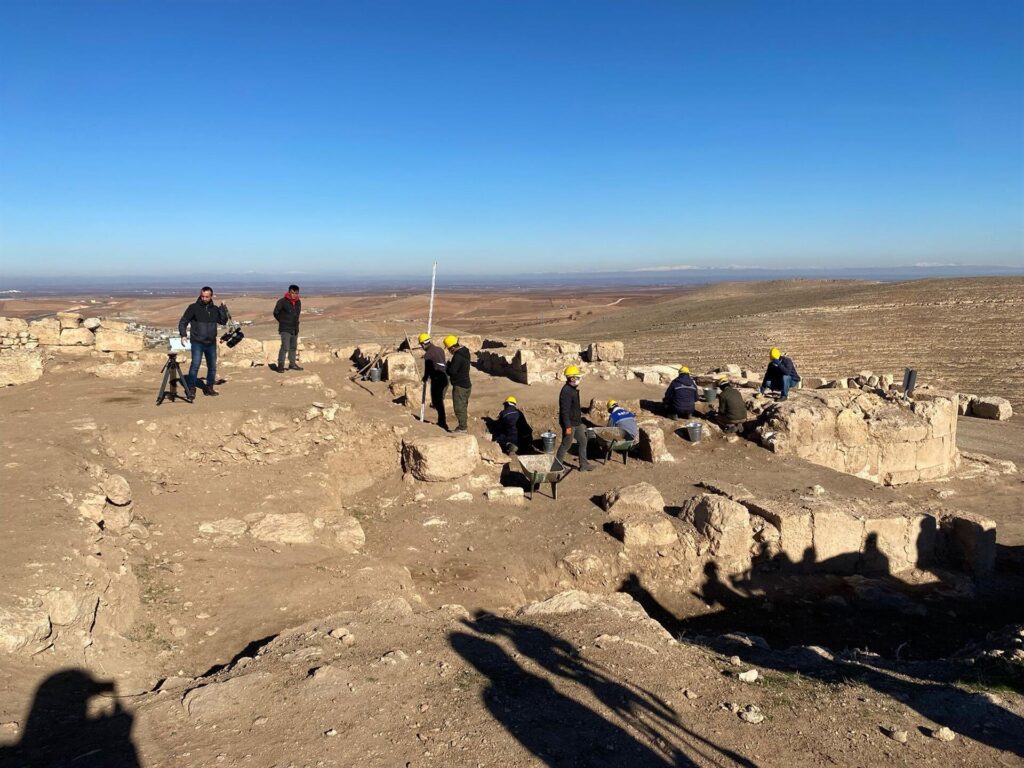1,600-Year-Old Flute and Key Unearthed in Turkey

A 1,600-year-old flute and bronze ring with a key have been unearthed during excavations in the 3,000-year-old Zerzevan Castle, located in the Çınar district of Diyarbakır and which served as the last garrison of the Roman Empire in the east. The castle is on the UNESCO World Heritage Tentative List.
Associate Professor Aytaç Coşkun, the head of the excavations, said the flute was important as it showed that the people living in the castle, which was a military settlement, had an interest in art and music.
The historical castle, which is home to the Mithras Temple, is located in an area of 60,000 square meters.
The historical castle has 12-15-meter-high and 1200-meter-long wall ruins, a 21-meter-high watchtower and defence tower, church, administration building, residences, grain and weapon warehouses, underground sanctuary, shelters, rock tombs, water channels and 54 water cisterns. Its 1,800-year-old entrance has been unearthed, too.
Coşkun said they uncovered very important structures and artefacts during the excavations that have continued since 2014.
Stating that the flute, which was identified to be 1,600 years old, and a ring with a special key were also unearthed during the latest excavations, Coçkun said that the flute, produced by making round holes in the bones of small cattle, is important as it reveals that the people living in the castle have an interest in art and music.

“The flute with six holes, one of which is broken, is dated to the 4th and 5th centuries A.D., that is, 1,600 years old. The ring with key, which was used to open a chest keeping very special items, is also dated to the 4th and 5th centuries A.D.
These artefacts are rarely found during excavations and are seen for the first time in the region. The number of visitors to the castle is increasing day by day,” he said.
Coşkun noted that Zerzevan Castle was the military settlement of the Roman Empire and one of the best-preserved garrisons in the world.
“We initiated the excavation works in the castle in 2014 and we took a break in the 2021 season. As of March, we started the excavation works again and the work will continue uninterruptedly until the end of December. Already, Zerzevan Castle is an excavation area and an important project that has been carried out for 12 months.
We have achieved many results in a short time. In fact, the works here are very important both for illuminating the history of the region and for the tourism of the region.
Many structures were unearthed, such as residences for soldiers and civilians, underground passages, water channels, and cisterns, and one of the most important structures was the Temple of Mithras, namely Mitraem,” Coşkun said.
He added that the excavations at the Mithras Temple, which started in 2017, will continue, too.
“We uncovered the underground church, the great church, the south tower, the walls, the main entrance in the walls. We will also carry out works on the wall line.
When we look at the walls, we see that they are protected up to eight-nine meters. And in the underground city of Zerzevan Castle, there is a filling between four and eight meters. There is also a large underground city.
One of the new works of this year will be in the administrative centre.
For the first time, we will start the work on a large complex structure located at the high point of Zerzevan Castle, where the city was managed and the administrators lived. We plan to make an important step in these excavations by the end of the year. We are even planning to open a large part of the structure,” he said.





